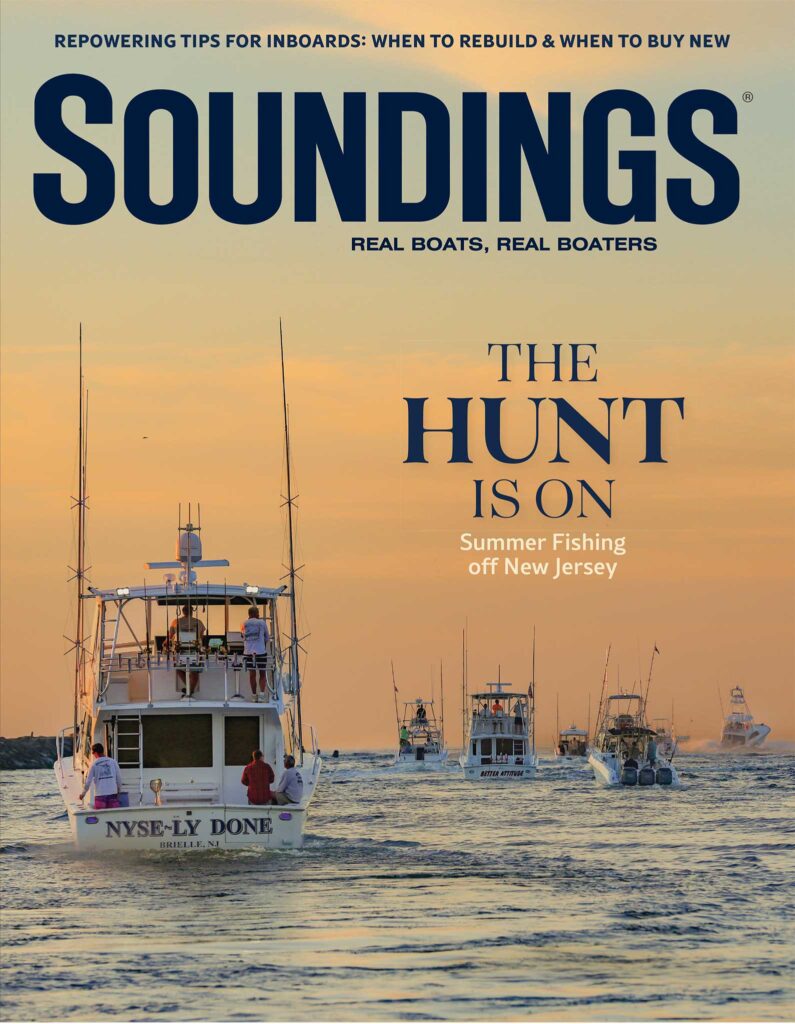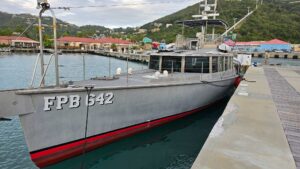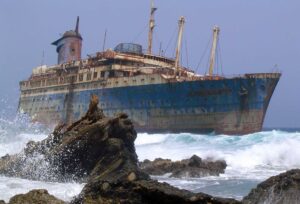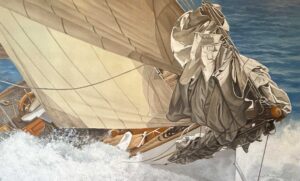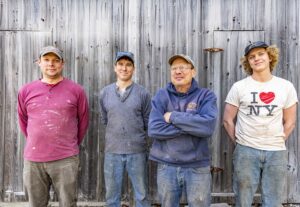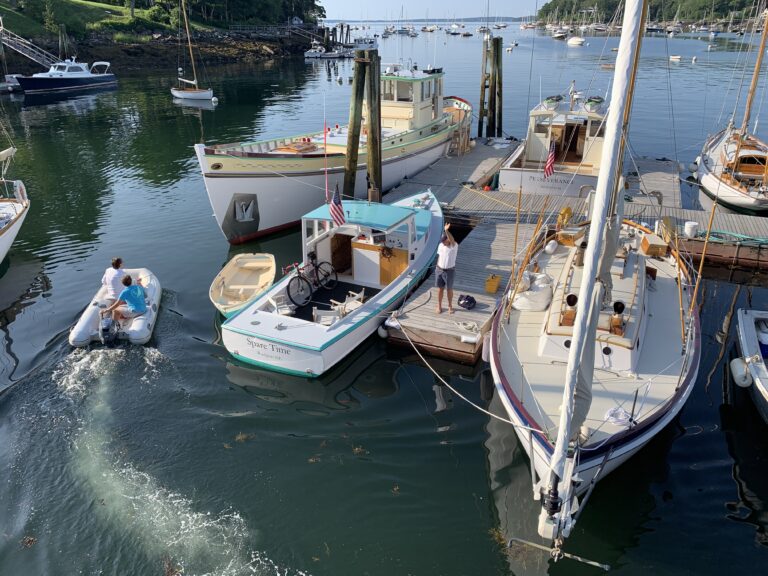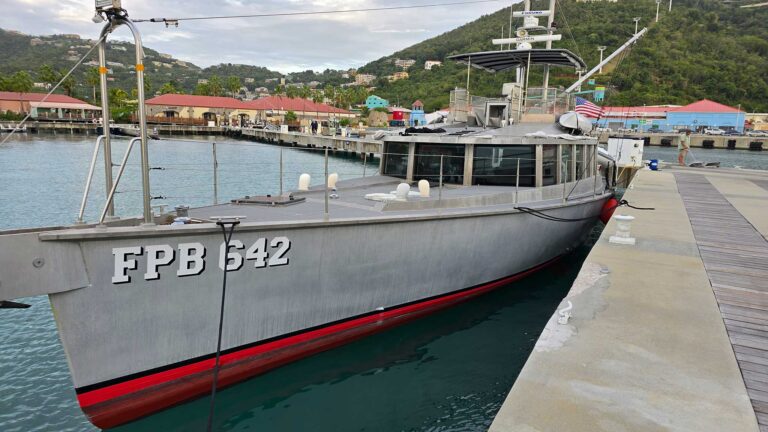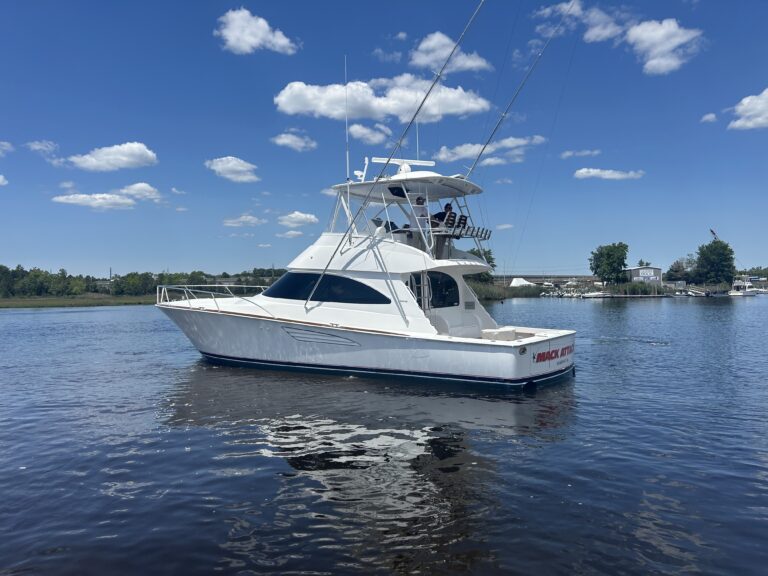North Carolina’s Pamlico Sound stretches 80 miles from Manteo and the Dare County mainland south to Portsmouth Island and Cape Lookout National Seashore. On good days, it’s a water wonderland, with fishing, boating, sailing and an abundance of wildlife.

Robert Dance shows another side in Pamlico Storm, as such confined bodies of water can become treacherous in heavy weather. The largest lagoon on the East Coast, Pamlico averages just 5 to 6 feet in depth. When the wind pipes up, the water becomes choppy and confused, full of shoals and shifting sands.
“I have put the fisherman in a precarious position that most would avoid,” says Dance, who is 81 and lives in Kinston, North Carolina. A storm has struck, and the fisherman reaches for the steering wheel on the mast. “Storms do come up quickly on the coast.”
Rough-water paintings involve hours of observation. “You can’t really set up your easel [out there],” says Dance. “So you go out when it’s rough and watch what’s going on.” Using models, he then puts a boat into the scene. “I study the model from all angles to get the feel of how the boat would act in those conditions.”
His painting technique plays a role, too. Dance builds thin layers of color, or “glazes,” to achieve a luminous quality. It’s a time-consuming process. For Pamlico Storm, he used alkyd, rather than oil, as his medium. “Alkyd is similar, but it uses an artificial resin binder,” he says. “That means it dries faster.” When it takes 15 to 20 glazes to get what you want, Dance says, “a quick-drying paint helps.”
The vessel in the painting is a classic Harkers Island workboat, says Dance. Harkers Island is known for its boatbuilders, and their boats were designed — with plenty of Carolina bow flare — for local watermen to use in Pamlico Sound and other Down East North Carolina waters.
To view this and other works by Robert Dance, visit the J. Russell Jinishian Gallery website at jrusselljinishiangallery.com or visit the gallery at 1899 Bronson Road in Fairfield, Connecticut.
This article originally appeared in the September 2015 issue.

